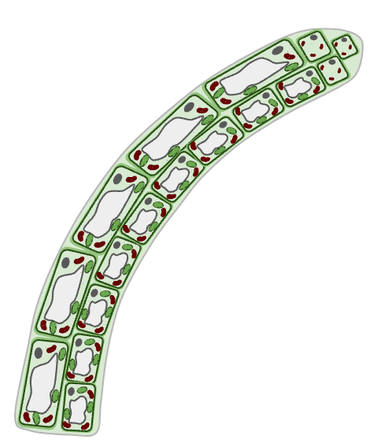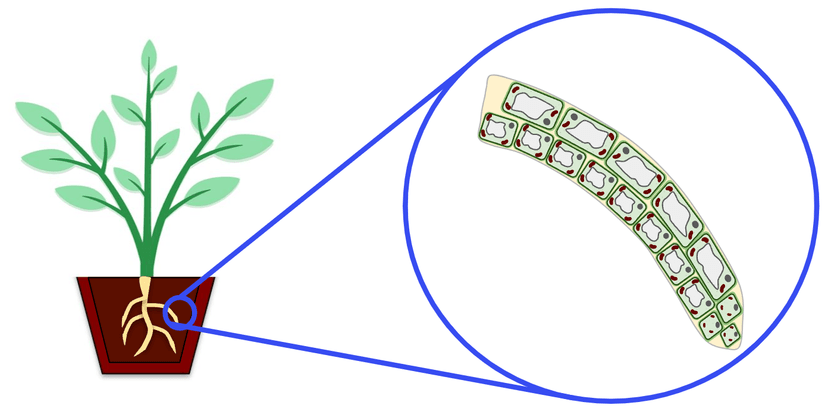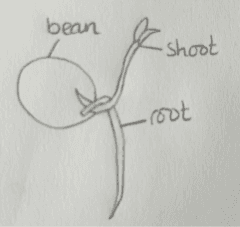Myths about teaching can hold you back
- Year 11
- AQA
- Foundation
The effect of gravity on the growth of seedlings: practical
I can measure, record and explain the growth response of seedlings placed in different orientations.
- Year 11
- AQA
- Foundation
The effect of gravity on the growth of seedlings: practical
I can measure, record and explain the growth response of seedlings placed in different orientations.
These resources were made for remote use during the pandemic, not classroom teaching.
Switch to our new teaching resources now - designed by teachers and leading subject experts, and tested in classrooms.
Lesson details
Key learning points
- Investigating the response of germinated seedlings to gravity (e.g. germinated beans placed vertically and horizontally)
- Producing accurate, labelled scientific drawings to depict the growth response
- Interpreting and describing the results
- Explaining the growth response of seedlings to gravity using ideas about auxins and gravitropism
Keywords
Auxin - plant hormones that affect the growth of plants
Gravitropism - a plant growth response towards or opposing the direction of gravity
Scientific line drawing - simple representation of a real object
Conclusion - summary of the results of an investigation with data and scientific explanations
Common misconception
Pupils may think that a drawing must be as realistic as possible hence sketching is encouraged. Pupils may also think that roots will continue to grow in the direction that they start.
Emphasise that a line diagram is a simple representation of an object so sketching is not best practise. This lesson explains how roots will grow in the direction of gravity even if their orientation is changed.
To help you plan your year 11 biology lesson on: The effect of gravity on the growth of seedlings: practical, download all teaching resources for free and adapt to suit your pupils' needs...
To help you plan your year 11 biology lesson on: The effect of gravity on the growth of seedlings: practical, download all teaching resources for free and adapt to suit your pupils' needs.
The starter quiz will activate and check your pupils' prior knowledge, with versions available both with and without answers in PDF format.
We use learning cycles to break down learning into key concepts or ideas linked to the learning outcome. Each learning cycle features explanations with checks for understanding and practice tasks with feedback. All of this is found in our slide decks, ready for you to download and edit. The practice tasks are also available as printable worksheets and some lessons have additional materials with extra material you might need for teaching the lesson.
The assessment exit quiz will test your pupils' understanding of the key learning points.
Our video is a tool for planning, showing how other teachers might teach the lesson, offering helpful tips, modelled explanations and inspiration for your own delivery in the classroom. Plus, you can set it as homework or revision for pupils and keep their learning on track by sharing an online pupil version of this lesson.
Explore more key stage 4 biology lessons from the Plant growth and development unit, dive into the full secondary biology curriculum, or learn more about lesson planning.

Equipment
Beans, cotton wool, petri dish, plastic zipped food bags, kitchen roll, stapler.
Content guidance
- Risk assessment required - equipment
Supervision
Adult supervision required
Licence
Prior knowledge starter quiz
6 Questions
Q1.Which plant hormones control phototropism?
Q2.Match each part of the plant to the effect auxin has on it.
auxin inhibits elongation of the cells
auxin promotes elongation of the cells
Q3.What is a tropism?
Q4.Look at this image of a shoot. From which direction is the light coming?

Q5.Gravitropism is a plant's response to .
Q6.Where has auxin gathered in the root pictured?

Assessment exit quiz
6 Questions
Q1.Which of the following are features of biological drawings?
Q2.What is the plant response to gravity known as?
Q3.True or false? Shoots use positive gravitropism.
Q4.Put these steps in the right order for investigating gravitropism.
Q5.In roots, auxin growth.
Q6.In the following example, why has the shoot grown upwards and the root grown downwards?



